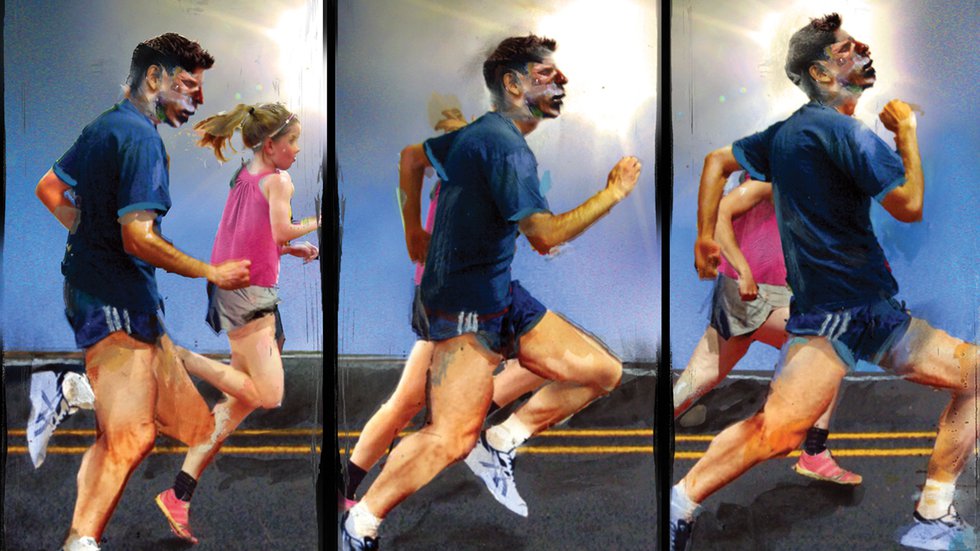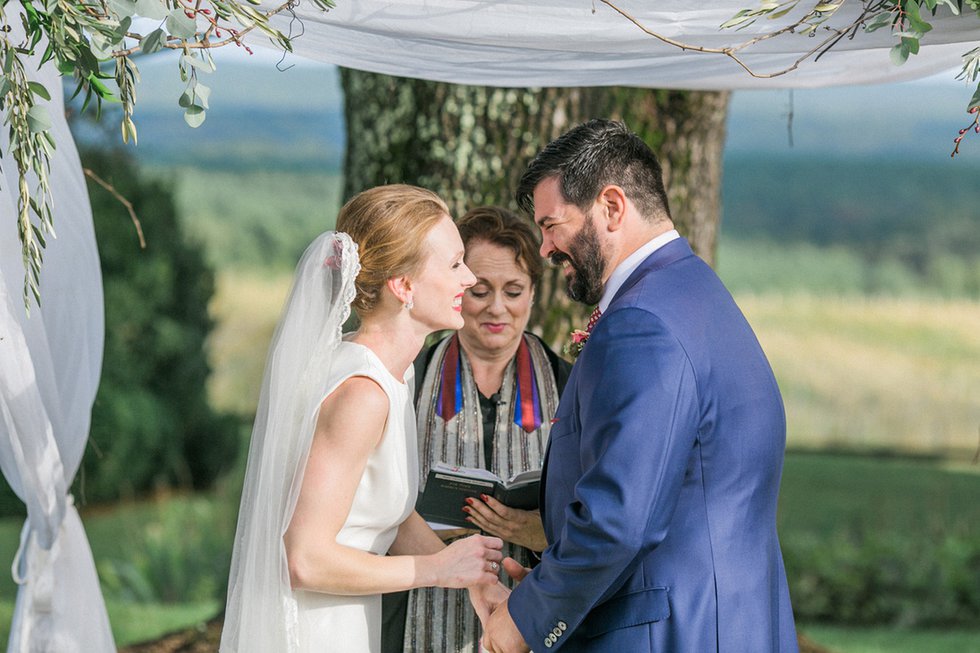The agony and bliss of cross-country running.

Illustration by David Hollenbach
It’s fall again. Summer boot camp is over, and it’s the time of year to watch the most beautiful sport of all. No, not football, but cross-country running. For me these days, that usually means traveling to picturesque places across Virginia, like Panorama Farms, Pocahontas State Park or Great Meadow on a Saturday morning to watch high school races that cover five kilometers (3.1 miles) through fields and forests—30 minutes or so of agony and bliss.
Each race is an intense test of willpower, fitness, technique, endurance DNA, and sometimes even a bit of orienteering, and each is in its own way a divine thing.
I confess that I was long oblivious to the thrill of the sport. In high school I played football in the fall, like so many boys, I suppose, to prove my manhood and because, well, we just did. I have a love-hate relationship with the game, which kept me out of even more mischief than I got into as a teen but also provided me with a broken arm, a ruptured tendon, a concussion or three, and multiple pairs of broken glasses. In our adolescent lunacy, we considered cross-country to be for wimps.
The transformation came one autumn at dusk as I watched my daughter, then a middle-schooler, and a pack of JV race runners silhouetted on the horizon at the top of a rise. I was suddenly struck with just how lovely it was to see the form of the human body in the simple, elemental, but incredibly complex act of running. It was then that I realized I could identify her by nothing but her stride. This was a beautiful thing: just the girls, of all shapes and sizes, and the landscape and their running form, pumping arms and legs, efficiently or not, bobbing heads or not, each one unique, like Willa, her own fingerprint or snowflake.
Part of the thrill was that my daughter, Willa, was out front by about 10 yards. It was early in the race, but I felt a swell of pride. The best thing about watching Willa run, however, was not that she was fast but that she always had a smile on her face, even up the notoriously vertical slope known as Jacob’s Ladder, at Roslyn, an Episcopal retreat on the hills above the James River. The real beauty of cross-country running is not in winning races but in gaining self-understanding and, for teenagers particularly, confidence and a sense of being in control.
After all, the result you get is almost directly related to the effort you put into training. The harder you work (within reason) and the better you take care of yourself, the easier it is to run up those hills. That doesn’t mean you’re necessarily going to beat your opponent by out-training her, but it does mean that the more effort you put into preparing, the better you will do relative to yourself. “PRs,” personal records, are the times that runners strive for. Though it’s a cliché, “being all you can be” is a great goal to set, and perhaps the only really important one.
Cross-country is one sport where athletes can definitely over-train, especially girls, who are prone to iron deficiency, stress fractures and shin splints. It is important not to run all the time but to strengthen the core and cross-train. Hence summer boot camp, a time when the younger King sisters, Willa and Nora, allow their dad to not only run but also swim and do lunges, squats and planks with them.
Another great thing about cross- country is that it is a team sport. It was once even a men’s event at the summer Olympics, until the 1924 debacle in Paris, when half the runners dropped out, felled by the heat and noxious fumes from a power plant. But that’s another story. In one of the greatest displays of team sportsmanship I have seen, at a regional championship meet in Willa’s freshman year of high school, a senior team captain ran alongside Willa, who was sick that day, sacrificing her own possible personal regional honors to power Willa to the finish line for the team.
In another race, a teammate steered her back onto a poorly marked course after she, leading the way, had run onto a stray path into the woods.
While only the first seven runners impact a team’s score, the ethos is that every runner on the team matters just as much as any other. It’s all about participation and simply learning to love to run.
Grace, our first daughter to take up this beautiful sport, made it to the JV league championships (all runners not on varsity did). Only her running shoes did not. She forgot them. So she ran in her Chuck Taylors, proving once again that XC is not for wimps. As one runners’ t-shirt aptly puts it: “My sport is your sport’s punishment.”










